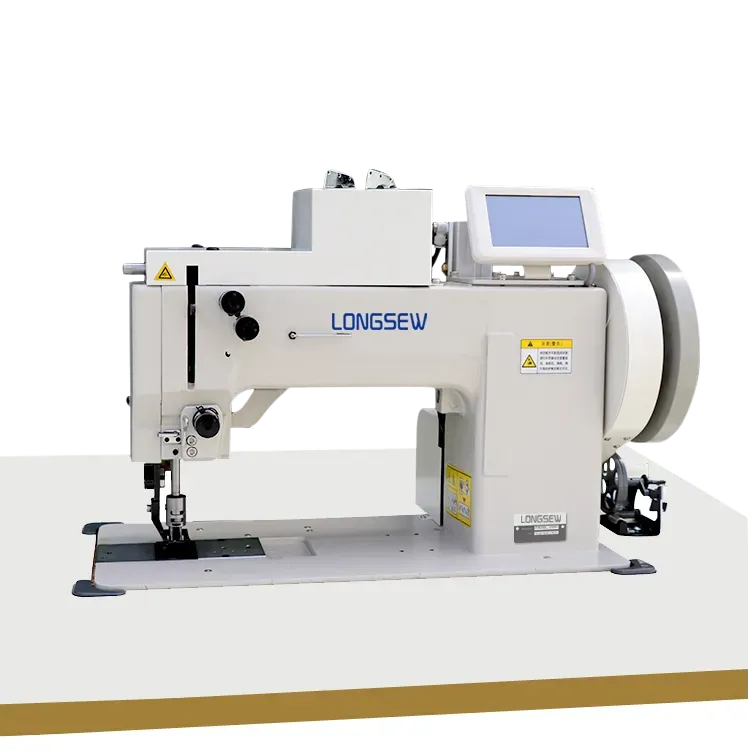Exploring the Functionality and Features of the Boot Patcher Sewing Machine for Craft Enthusiasts
The Evolution and Impact of Boot Patchers in the Sewing Industry
The sewing industry has seen remarkable advancements over the decades, with various machines designed to address specific needs. Among these innovations, the boot patcher sewing machine stands out as a vital tool in the footwear repair and manufacturing sectors. This specialized machine has transformed the way boots and other heavy-duty footwear are repaired and constructed, catering to both individual cobblers and large-scale production environments.
A boot patcher sewing machine is engineered to handle thick materials such as leather or heavy fabrics, making it ideal for boot repair. The robust design of these machines allows them to sew multiple layers of material without compromising on stitch quality. Historically, boot repair was a labor-intensive task, often involving hand stitching, which was not only time-consuming but also less durable. The introduction of the boot patcher has significantly improved efficiency, enabling cobblers to complete repairs faster and with greater precision.
One of the most significant benefits of the boot patcher is its versatility. It can be used for various applications, including patching up holes, stitching seams, and reinforcing stressed areas of the boot. This adaptability is crucial in a market where consumer demand for durable footwear is high. With an increasing number of people seeking sustainable options, the ability to repair and extend the life of boots is more relevant than ever. Boot patchers have become essential in promoting an eco-friendly approach to fashion, as they encourage the repair and reuse of footwear rather than discarding them.
boot patcher sewing machine

Technological advancements have also led to modern boot patchers being equipped with features that enhance usability. Many machines now come with automatic functions that adjust stitch length and tension, reducing the skill barrier for novice users. Furthermore, digital displays make it easier to monitor sewing settings, while enhanced feed systems ensure that even the thickest materials do not slip during the sewing process. These innovations translate to improved quality and consistency in every stitch, making repairs that last.
In addition to their role in individual cobbler shops, boot patcher sewing machines are also integral to manufacturing operations. Many footwear companies employ these machines to streamline their production processes. By automating portions of the assembly, companies can maintain quality control while increasing output. In a world where fast fashion often compromises quality, the boot patcher enables manufacturers to prioritize the durability of their products.
The rise of e-commerce has further amplified the significance of boot patchers. As consumers increasingly purchase footwear online, the need for easy repair solutions becomes paramount. Boot patchers allow businesses to provide repair services, fostering customer loyalty and promoting a sustainable approach to fashion. Brands that offer repair services not only enhance their reputation but also contribute positively to reducing waste in the industry.
In conclusion, the boot patcher sewing machine represents a crucial development in the sewing industry, bridging the gap between quality craftsmanship and modern efficiency. Its ability to accommodate heavy materials while ensuring durability makes it an indispensable tool for cobblers and manufacturers alike. As society moves towards more sustainable practices, the importance of effective repair solutions such as boot patchers will only continue to grow. By enabling footwear repairs and promoting longevity, these machines not only support artisanal traditions but also encourage environmentally responsible consumer behavior, paving the way for a more sustainable future in fashion.
-
Leather Sewing Machine: The Industrial Standard for Tough MaterialsNewsJul.18,2025
-
Sail Making Machine: Heavy-Duty Stitching for Industrial and Marine NeedsNewsJul.18,2025
-
Sling Sewing Machine: The Backbone of Heavy-Duty FabricationNewsJul.18,2025
-
Leather Sewing Machine: Precision for Heavy-Duty StitchingNewsJul.18,2025
-
Big Bag Sewing Machine: Powering the Future of Bulk PackagingNewsJul.18,2025
-
FIBC Sewing Machine: Essential Equipment for Bulk Bag ProductionNewsJul.18,2025
-
Heavy Duty Leather Sewing Machine: A Must-Have for Professional LeatherworkNewsMay.28,2025





























